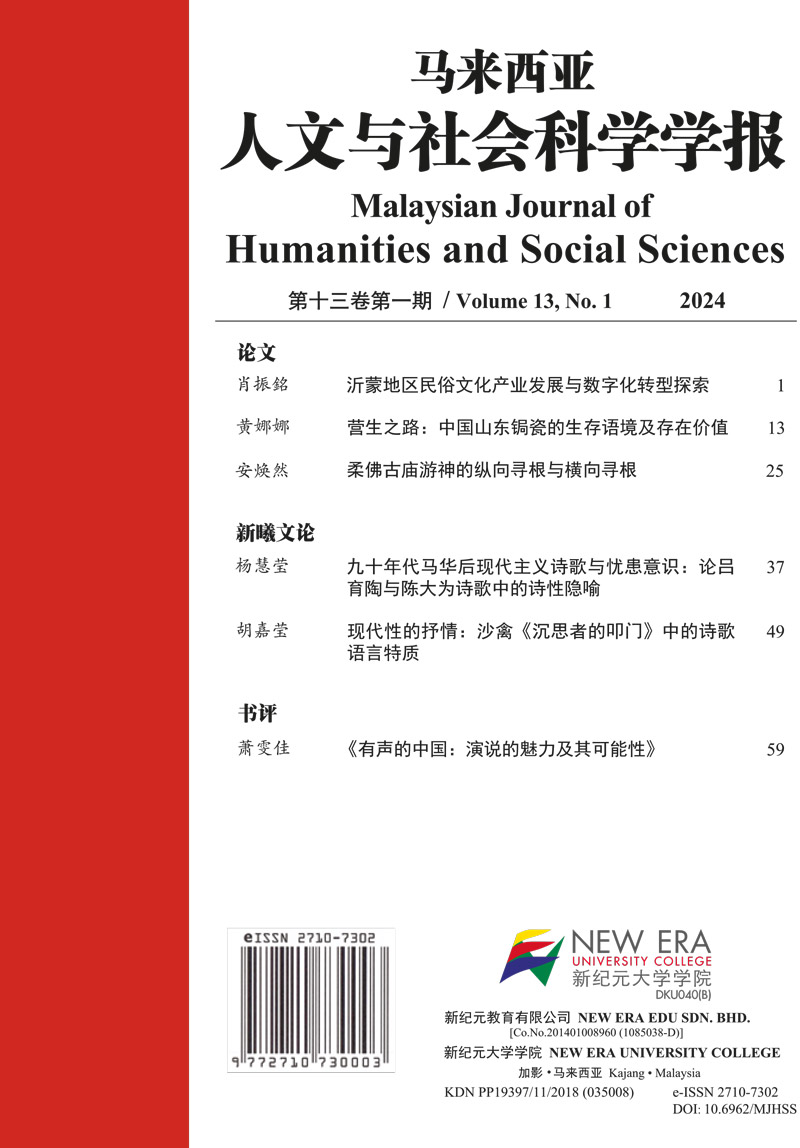现代性的抒悄: 沙禽《沉思者的叩门》中的诗歌语言特质 Lyricism of Modernity: Poetic Language in Sha Qin's "The Knocks of the Contemplator"
Keywords:
沙禽、抒情、诗歌语言、马华文学, Sha Qin, lyricism, Poetic language, Malaysian Chinese literatureAbstract
马华诗人沙禽,原名陈文煌。2013年以诗集《沉思者的叩门》荣获马来西亚星洲日报第十二届花踪文学奖之马华文学大奖,足以见得其诗作之价值。回首七十年代初,他与何启良、张景云、黄学海等人于吉隆坡创办以现代派著称的“人间诗社”。然而,彼时马华文坛所认知的“现代主义“文学观念,是受台湾的杨牧、余光中和蓝星诗社等的启发。尽管如此,诚如何启良所述,沙禽却丝毫没有受到台湾现代诗作的影响。对此,沙禽也曾明确表示,从不将自己限定千某一类别,只是纯粹地将自己的思想和感受写下来。如此迂回的答复,不禁让人感到吊诡。缘此,通过分析沙禽的诗集《沉思者的叩门》,借以探索从不将自己归类“现代派”,却以“现代诗”著称的沙禽,其诗作中所呈现的语言特质,显得十分必要。综述沙禽诗歌语言特质有三:一、向心诠释(a centripetal interpretation) 的抒情艺术形式。二、回应国家现代化的文化意识。三、借象征语言以隐匿文本的指涉。
Malaysian Chinese poet Sha Qin, original name Chen Wenhuang, achieved recognition in 2013 when his poetry collection "The Knocks of the Contemplator" won the MCA Literary Award at the 12th Sin Chew Jit Poh Huazong Literature Awards in Malaysia. This recognition reflects the value and contribution of his poetic works. In the early 1970s, Sha Qin, along with Ho Kai Leong, Zhang Jingyun, Huang Xuehai, and others, founded the renowned "Human World Poetry Society" in Kuala Lumpur which was known for its modernist style. However, the literary concept of "modernism" prevalent in the Malaysian Chinese literary circle at that time was influenced by figures such as Yang Mu, Yu Guangzhong, and the Blue Star Poetry Society from Taiwan. However, as Ho Kai Leong described, Sha Qin was not at all influenced by Taiwan's modem poetry. In this regard, Sha Qin has also made it clear that he never limits himself to a certain category, but simply writes down his thoughts and feelings. Such evasive responses cannot help but appear intriguing. Therefore, despite not categorizing himself as part of the "modernist" camp, it is imperative to delve into the linguistic characteristics exhibited in Sha Qin's poetry, considering his renowned status in the realm of "modem poetry." In summary, Sha Qin's poetry exhibits three linguistic characteristics: Firstly, a lyrical artistic form of centripetal interpretation. Secondly, the language aims to respond to the cultural consciousness generated by the national modernization process. Lastly, it is the utilization of modernist symbolic language to conceal the references within the text.




